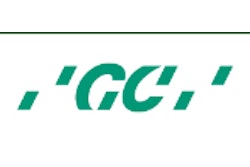
When creating aesthetic restorations with CAD/CAM blocks, finding a close match to the shade and color of a patient's teeth is crucial. Researchers tested the aesthetic values of three hybrid CAD/CAM blocks and found some differences among the materials.
Rather than recommending one of the materials, the researchers noted that dentists should focus on a material's chromatic values to get the best outcome for each patient.
"Nanoceramic and polymer-infiltrated-feldspathic ceramic-network CAD/CAM materials exhibited different optical, inherent color, and surface parameters," the authors wrote Journal of Advanced Prosthodontics (February 2018, Vol. 10:1, pp. 32-42).
The lead study author was Ferhan Egilmez, DDS, PhD, of the department of prosthodontics at the Gazi University Faculty of Dentistry in Ankara, Turkey.
Aesthetic characteristics
As CAD/CAM technology is becoming more popular for creating restorations, dentists now must understand the aesthetic and optical characteristics of CAD/CAM materials so they can obtain a close match with a patient's natural tooth.
“Nanoceramic and polymer-infiltrated-feldspathic ceramic-network CAD/CAM materials exhibited different optical, inherent color, and surface parameters.”
Previous studies have shown that when ceramic restorations are 2.0 mm in thickness, the human eye can't detect any color changes from the underlying tooth. However, when the ceramic thickness is 1.0 mm, the underlying color is detectable by the human eye.
Practically, this means that when the material's thickness is 1 mm or less, the underlying tooth discoloration could affect how the restoration looks. Therefore, previous studies have suggested that the substrate color should be masked for the optimal color mimicking.
To help dentists determine which hybrid composite is aesthetically appropriate, the researchers of the current study compared the qualities of three hybrid CAD/CAM blocks:
- Cerasmart (GC America), a high-density composite resin material
- Lava Ultimate (3M), a nanoresin ceramic material
- Enamic (Vita), a polymer-infiltrated-feldspathic ceramic-network material
They studied the inherent color (hue angle and chroma), translucency, surface gloss, and surface roughness of these materials. Chroma is the differentiation between pale and strong colors. Translucency is the ability of a material to diffuse light as it passes through the material.
The study included chroma and hue angle because basing the comparison and selection of shades on these values is common clinical practice, the researchers reported.
They went into the testing thinking there would be no difference in the inherent color parameters of hue angle and chroma, the translucency parameters, or the surface roughness or surface topographies of the tested materials.
The researchers prepared a total of 225 specimens into square-shaped (12 x 12 mm2) blocks, which were then divided into five thicknesses ranging from 0.5 mm to 2.0 mm. They compared three shades for each material, using a reflection spectrophotometer to measure color, translucency, and surface gloss, and assessed surface roughness and surface topography by white light interferometry.
Translucency values were similar for all materials in the study, except for one shade of Lava Ultimate. Lava Ultimate had the largest hue angle for two of the three shades tested, and Vita Enamic had the best chroma results overall, the researchers reported (see table below).
| Chroma, hue angle, and translucency values by material and shade tested | |||
| Material and shade tested | Cerasmart A1-HT | Lava Ultimate A1-HT | Vita Enamic 1M1-HT |
| Chroma | 0.938 | 0.787 | 0.980 |
| Hue angle | -0.980 | -0.858 | -0.980 |
| Translucency value | -0.982 | -0.927 | -0.982 |
| Cerasmart A1-LT | Lava Ultimate A1-LT | Vita Enamic 1M1-T | |
| Chroma | 0.980 | 0.948 | 0.980 |
| Hue angle | -0.980 | -0.969 | -0.980 |
| Translucency value | -0.982 | -0.982 | -0.982 |
| Cerasmart A3-LT | Lava Ultimate A3-LT | Vita Enamic 3M2-T | |
| Chroma | 0.980 | 0.934 | 0.956 |
| Hue angle | -0.980 | -0.980 | -0.980 |
| Translucency value | -0.982 | -0.982 | -0.982 |
Both surface gloss and roughness results varied significantly among the materials (p < 0.001) and among the shades (p < 0.05), the study authors reported. Lava Ultimate had more surface gloss than Vita, which in turn had more than Cerasmart. However, that order was reversed for surface roughness.
Enhanced appearance
The authors acknowledged some limitations in their study:
- The translucency results cannot automatically be related to the clinical situation because the effect of the underlying structure was not taken into consideration.
- The influence of color parameters and the difference in translucency of the tested materials was not determined by only black background.
They concluded, however, that the findings from their study and others enable dentists to create a more aesthetic appearance for their patients.
"The findings of our study suggested that the presented differences in the color characteristics and optical and surface properties of the tested materials enable clinicians to enhance the appearance of the restorations to the specific situations," the authors wrote.



















